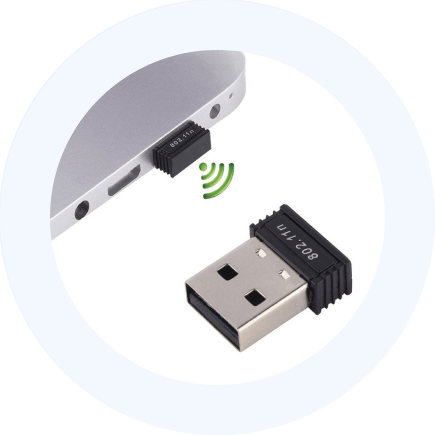
Monitor wireless adapters and WiFi access points
For Windows
- Test your WiFi hardware and setup
- Check signal levels of your home or office WiFi networks
- Measure network speed and throughput
- Locate sources of interference to your network
- Scan for hot spots in your local area (wardriving)
Feature-rich WiFi diagnostic tool
WiFi Network Overview
View a detailed list of all the access points your network card detects, plus your connected network. See details such as Status, SSID, the principle channel the network is using, channel width, security settings, supported data rates, MAC addresses plus information such as the time period the access point was first seen and when it was last active.
Track the number of dropouts per access point, useful when checking long term stability.
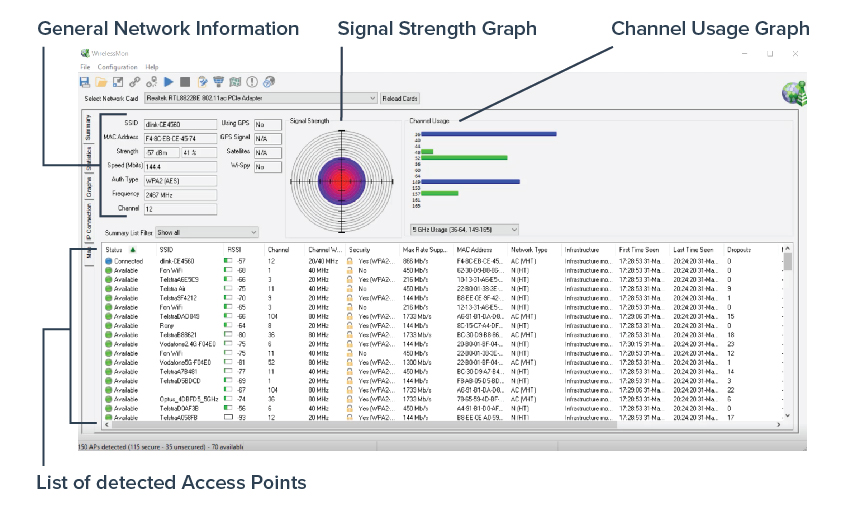
Measure network speed and stability
Run extensive tests to measure and graph the stability and speed of your WiFi connection. Help isolate and locate drop outs and the causes of unreliable connections.
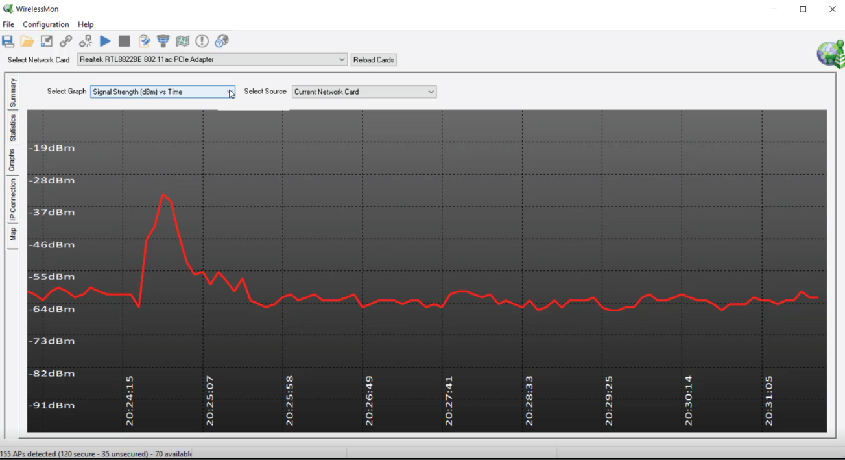
Wireless LAN information
WirelessMon can report a large variety of in-depth LAN information (when available) such as:
Statistics information: More than 30 parameters are reported. Including a detailed breakdown of frames sent and received, error counts, transmission retry counters and related low-level data.
TCP/IP information: includes adapter MAC address; Adapter device driver name; the IP Address; Subnet Mask; if DHCP is enabled; the Gateway Address and the DHCP server IP address.
IP counter information: Network throughput is monitored and displayed. Includes maximum bandwidth available, current send and receive data rates, plus error counters.
WirelessMon can also be reduced to a “Mini window” mode that appears as an overlay in the top right corner of your screen that provides on-going surveillance of your signal strength.

Extensive Signal Strength Mapping
Map Signal Strength
Create Signal Strength Maps (aka heatmaps) of your home, office or local neighbourhood. Determine areas of weak Wi-Fi signal that might require signal repeaters, or areas which are congested with other Wi-Fi networks.
WirelessMon supports GPS for logging and Mapping, though you can create maps without the use of a GPS device.
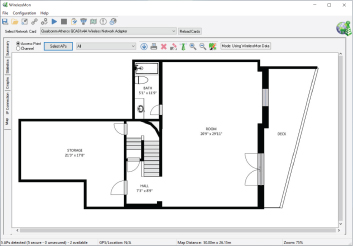
Hex Mapping
The HEX mapping functionality uses hexagons to gradually construct a map of the signal strengths of access points. It uses current location and signal strength information to build out a picture of your signal strength.

Contour Mapping
With the contour mapping functionality, this map predicts the signal strength around the sample point, building out a more accurate map of your signal in your location.
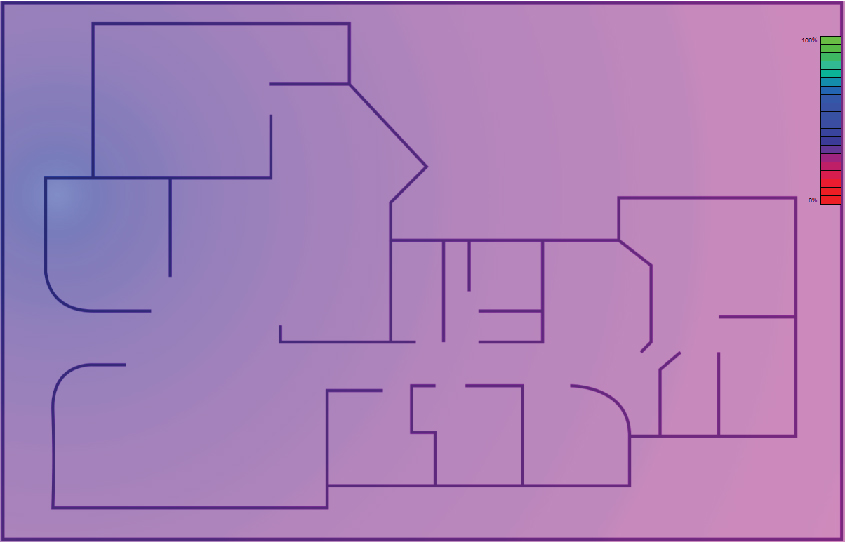
Signal Strength Loss Mapping
By adding the location of your router on your map, WirelessMon will calculate signal loss based on obstructions detected. This handy feature allows insight to the accessibility and network speed in every corner of your home or office.
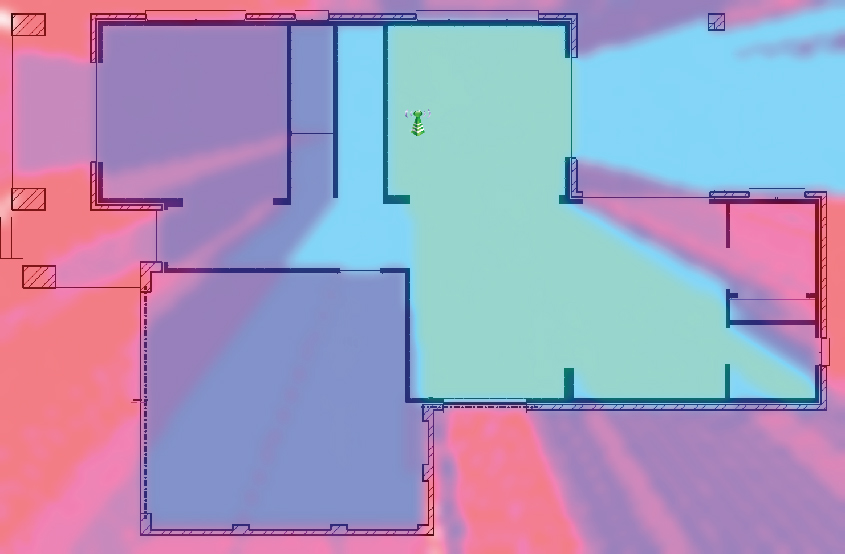
Optimised Channel Selection

WirelessMon can identify and display channel width. This is visualised in the graph where an access point using 40Mhz channels is displayed as twice the width of an access point using 20Mhz channels.
Connect via a MAC Address
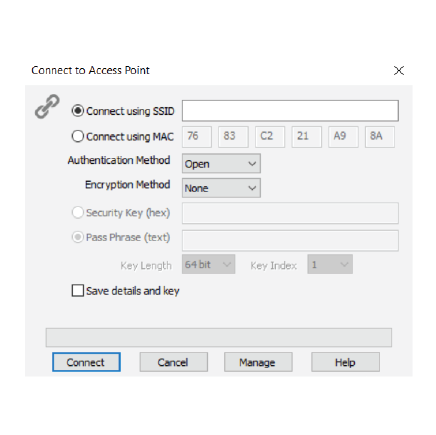
Compatibility
Any wireless adapter that complies with the NDIS_802.11 (which is most of them) should be able to report information to WirelessMon. All the various IEEE 802.11 standards are supported, including 802.11a/b/g/n, 802.11ac/ax (also known as Wi-Fi 1 to Wi-Fi 6).
Some Garmin USB GPS devices (developed using the standalone OEM USB units) are supported via a USB connection.
Windows 7, 10 & 11 support this software.
